‘Silent Hill 2’: The Psychological Horrors of James Sunderland [Nightmares in the Fog]
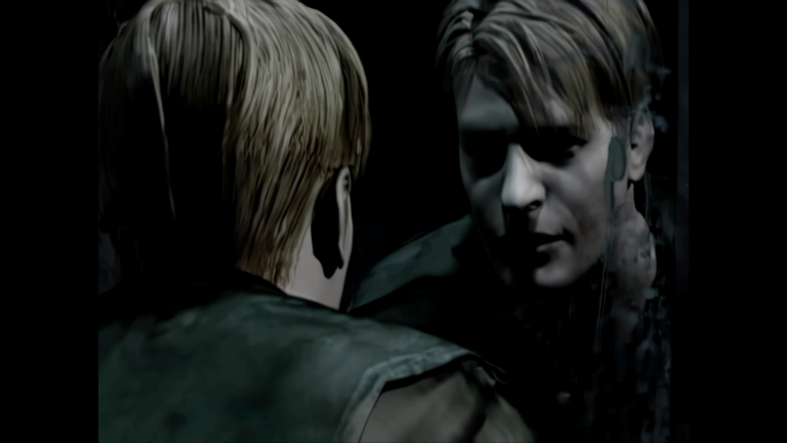
Trigger Warning/Disclaimer: This article contains discussions of grief, sexual repression, and suicidal ideation; as well as spoilers for Silent Hill (1999) and Silent Hill 2 (2001).
Welcome to Nightmares in the Fog. Each edition of this series will explore how each game in the Silent Hill franchise uses aesthetics and emotions as storytelling devices. Together, we will step into the fog in search of the horrors found within.
This time we will traverse the lakeside tourist area of the town as we delve deep into the grief and guilt felt by many of the characters found in Silent Hill 2.
In the first installment, we unpacked the aesthetic terrors of the original Silent Hill (1999) and how they evoked Alessa Gillespie’s eternal pain and supernatural abilities. Although these elements are explicitly mentioned at certain points in the game’s story, the player is only able to understand the weight and significance of Alessa’s emotions by means of the game’s visual, gameplay, and sound design. The same holds true for every other game in the franchise. Albeit, the execution and intention behind these aesthetic decisions vary widely between each game due to each one focusing on different perspectives.
Silent Hill 2 is an interesting beast to approach with regard to character perspective. Unlike the original game, there is not a singular central figure at the heart of the world’s eerie manifestations. Fortunately, most of the visual and audio storytelling in Silent Hill 2 centers around James Sunderland. He serves as the player’s surrogate throughout the game, and its story focuses on the mysteries surrounding his late wife, Mary. Therefore, this exploration will focus primarily on how the game represents James’s inner turmoil and guilt. Be that as it may, I will still include brief accounts of aesthetic storytelling as it relates to some of the supporting characters, including Angela Orosco, Eddie Dombrowski, and Alessa Gillespie.
In case the game’s story is no longer fresh in your memory, or you are reading this without having played it before, here is a brief synopsis of its main plot points.
BEHIND THE FOG: A Brief Synopsis of Silent Hill 2
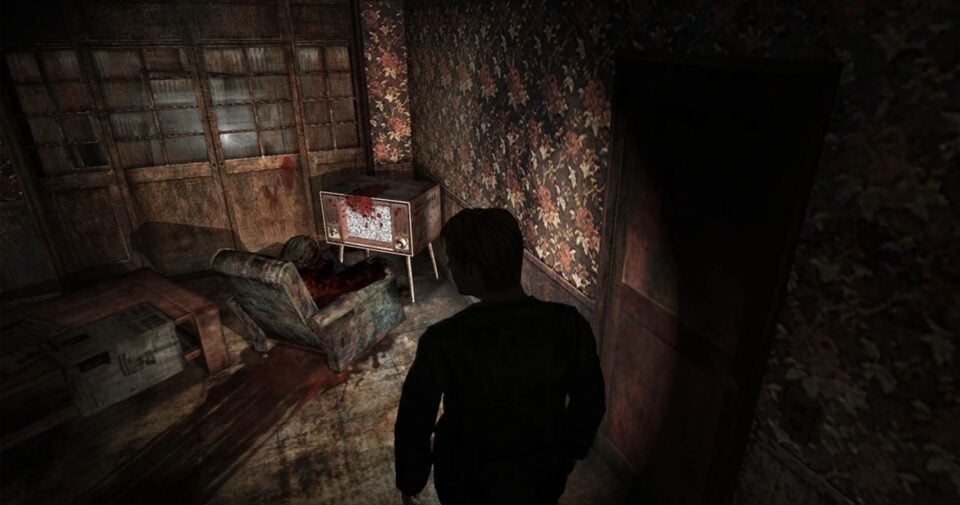
In the previous installment, I said these synopses would get shorter as we go. However, as straightforward as Silent Hill 2’s narrative may seem, it is actually quite complex. There are a lot of important character events to cover. So, bear with me. I promise this will all serve the aesthetic reading that follows.
If you are familiar with the story of the Silent Hill games and want to get straight into the analysis of its aesthetic elements, please scroll ahead to the next section.
In Silent Hill 2 we return to the billowing mists of that small town through the lens of James Sunderland, a young man in his late 20s who is returning in search of his late wife, Mary. He recently received a letter from her saying to meet her at their “special place.” The thing is, Mary has been dead for three years at this point.
It is obvious from our first glimpses of James that he is a shell of a man. Consumed by grief and utterly bewildered by the letter he has received. He has returned to Silent Hill to see if there is a chance that he and Mary could truly be reunited. The trek is long and arduous. Human-like monsters now roam the once quaint streets the couple walked along while vacationing there many years ago.
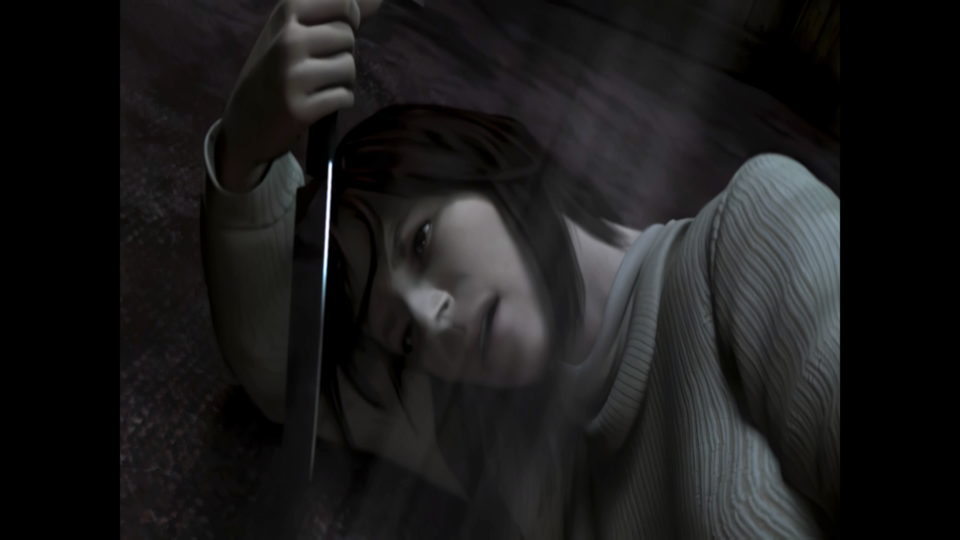
Fortunately, James is not left alone with just his misery and trusty pocket radio. Along the way, he comes across a variety of eccentric characters who, like him, have been drawn to the sleepy fog of Silent Hill. The first person he runs into is Angela Orosco, a 19-year-old girl with the soul and demeanor of someone in their late 30s. She’s confused and looking for her “Mama.” At first, the two are unnerved by each other and awkwardly part ways. However, they will come to aid one another on multiple occasions throughout the story.
Sometime later, James comes across a disheveled and rambling Eddie Dombrowski as he throws up repeatedly in the bathroom of an abandoned apartment building. Eddie never ends up being of much use to anyone in the story. Each time James runs into him, he rants and raves about crimes he supposedly never committed. In that same apartment, James meets a little girl by the name of Laura, who we later discover to be one of the patients from the same ward as Mary. She resents James for some reason, saying he never loved Mary and to leave her alone. The majority of the game follows a similar pattern to the first, with James following Laura through the town to make sure she is safe.
Then there’s Maria…
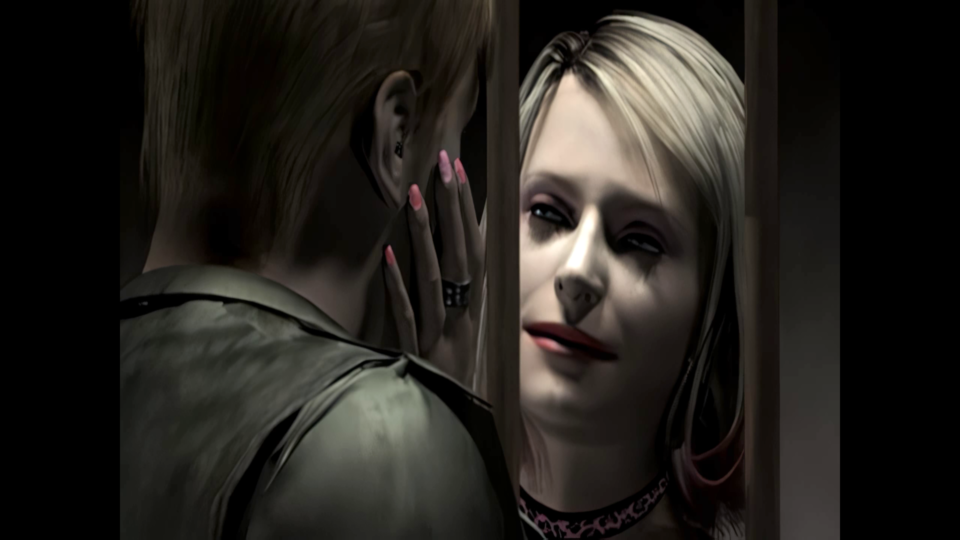
Maria is a young woman in her mid-20s who is the spitting image of James’s late wife. Same face, same voice, same everything. Except, she is much spicier in both attitude and attire. Maria continuously looks to James to keep her safe and berates him whenever he fails to do so. By which I mean, each time she dies. She dies right in front of James on numerous occasions. Is Maria who she says she is? Why does she look and feel like Mary? How did she get here? These questions linger in James’s mind with each encounter. Perhaps he has finally lost his mind. His wife has been dead for many years, after all.
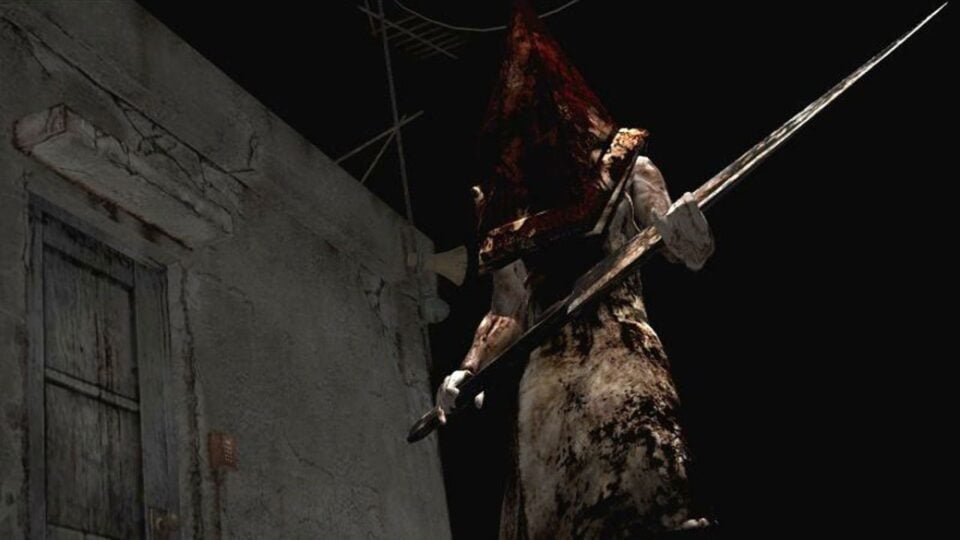
To make matters even more harrowing, James is also stalked by a large, imposing figure with a rusted pyramid for a head. It appears at multiple points throughout the game to remind James that he should never put down his guard while here. The way the “red pyramid thing” pursues James and Maria almost feels personal. As if it is punishing them for something.
Everything eventually becomes clear when James finally reaches the lakeside hotel he and Mary visited all those years ago. It is revealed that James had smothered Mary with a pillow in her hospital bed. The illness never killed her. He did. Whether this was done out of kindness or selfish gain is left unclear until he is beckoned to the hotel rooftop…in the Otherworld.
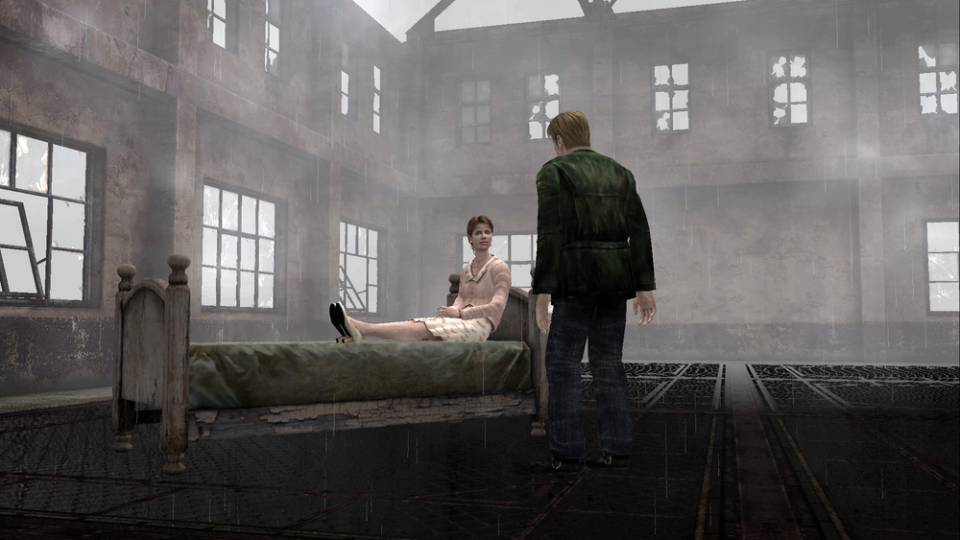
According to the player’s interactions with key items in James’s inventory and with Maria, he will either be met with a vengeful Mary or an obsessive Maria. Either way, he has to confront his literal demons by destroying the image of Mary once more. Depending on the aforementioned interactions, the ending will also change. In one scenario James has a heart-to-heart with Mary, and is forgiven. In others, he either succumbs to his guilt and drives into the lake, or he becomes so attached to Maria that he wanders the fog with her seemingly forever. There are other secret endings, but I’ll let you discover those for yourself.
INTO THE FOG: Visual Storytelling in Silent Hill 2
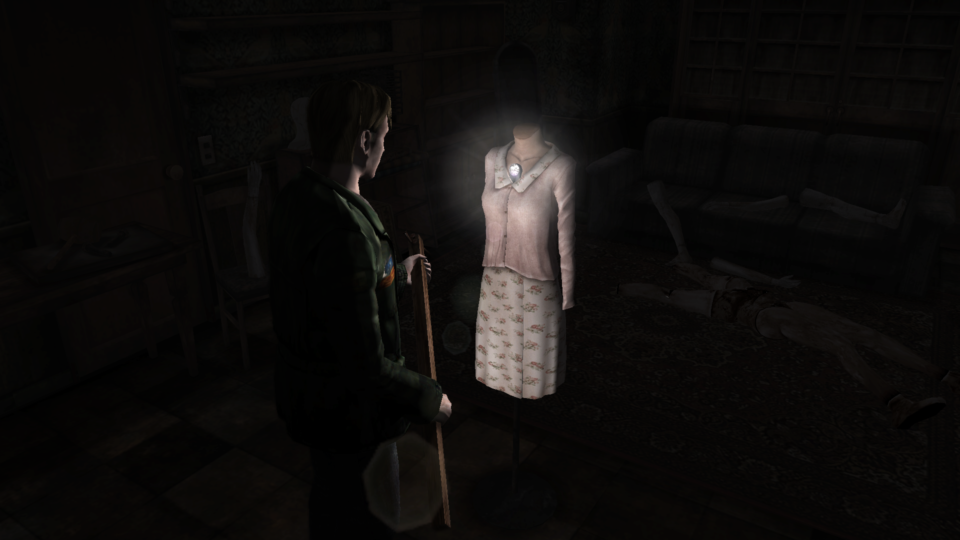
Just like with the first game, the way Silent Hill 2 tells its story is through a mix of traditional storytelling, visual aesthetics, and sound design. The visuals in this game are quite something to behold, especially if you play it directly after the original. The leap from textured polygons to the more sculpted models possible on the PlayStation 2 is profound.
Still, there were plenty of technical hurdles the developers needed to jump over in order to achieve their full vision. Surprisingly, despite the increased visual rendering capabilities the Playstation 2 had to offer, Team Silent went for a “what you can’t see is scarier” approach with this game. Both due to graphical limitations and to enhance the subtext of James’s sins hiding in the back of his mind. It was stated in the most recent interview about the Silent Hill 2 Remake that this approach will be altered a bit to take full advantage of the Playstation 5’s graphical power. It might end up a bit jarring for fans of the original version, because the “don’t show, don’t tell” style at its core is incredibly effective. Rest assured, I will return to James’s tale when the remake releases in the near future.
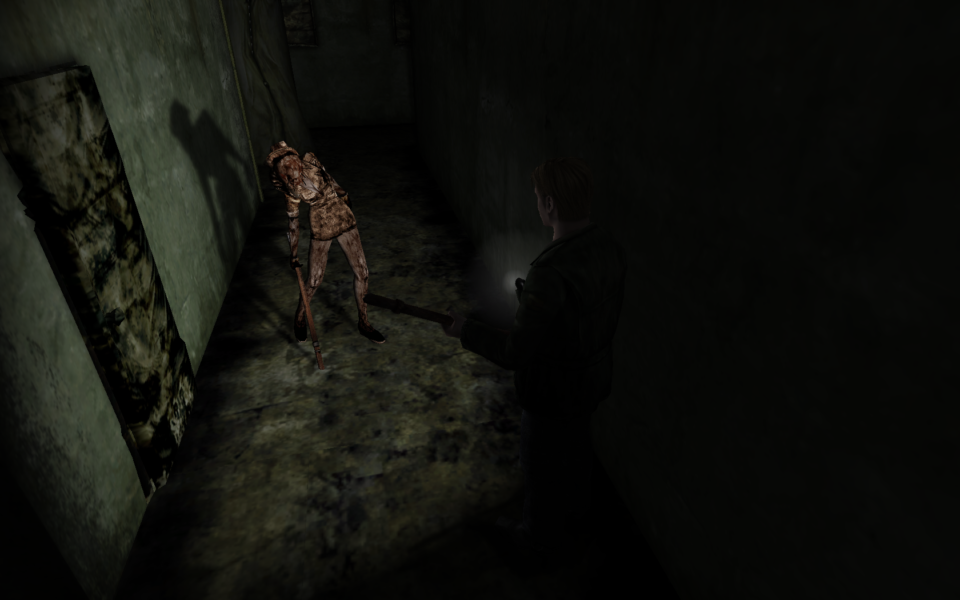
As one might expect, our good friend The Fog returns in this game. This time around it billows like a thick cloud. Similar to the first game, the brightness of the fog creates a stark contrast to the deep, inky shadows we will have to traverse at later points. However, this time we play a character whose mental state is the key to understanding the majority of the aesthetic decisions in the game. I say “majority,” because Silent Hill 2’s aesthetics appear to shift perspective according to who James is around. Essentially, the game is a showcase of how the hellscape at the heart of the town twists reality according to the individual’s personal demons. It can get a little complicated, but I will do my best to keep things as straightforward as possible.
To streamline things, I will stick primarily to James’s perspective and/or how someone else’s version of Silent Hill relates to it. Given that his reason for being in Silent Hill is due to the guilt and shame he harbors for killing Mary, most of the visuals are twisted representations of his repressed sexual urges while Mary was in the hospital. It is not established if he ever strayed, but it is made perfectly clear that he craved. The skirts on the nurses are inappropriately short. The Lying Figures are wrapped in their own flesh in a way reminiscent of bondage attire designed for breath-play. Pyramid Head saunters through the environment with his phallus of choice gripped tightly in hand. All of these elements connect back to the time James and Mary visited the Lakeview Hotel. Well before her diagnosis.
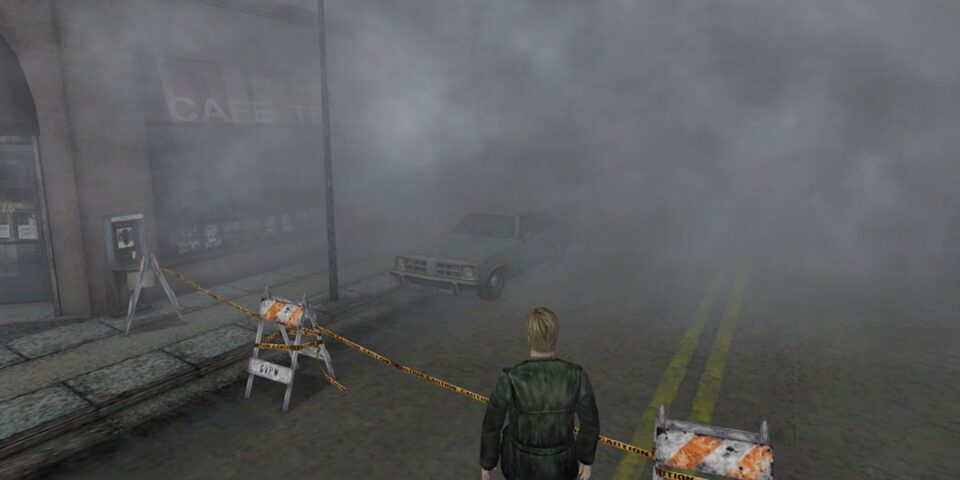
The town itself is presented much differently this time, as well. The fog is still there, but the streets are even more lifeless than when Harry walked through them. The only people we come across throughout the game are fellow outsiders who have no idea how they got there or why. Maria seems to be the only one who has any proper connection the place, which serves to be one of the strongest mysteries present throughout the story.
Everything looks decayed and abandoned. Windows are boarded up and many streets are blocked off by what appear to be quarantine gates. This could be seen as a visual allegory for how James has repressed his memories. However, it could also be a straightforward indication that something horrible happened here prior to James’s arrival. Either way, the sight is absolutely ghoulish with full streets crumbling away into an unexplained void. The remnants of what made this town charming in the past have become frightening reminders that nothing lasts forever.
Perhaps the most striking visual decision made for this game is the way we transition into the Otherworld. For one, it takes place nearly at the halfway point. Whereas the first game presented the Otherworld front and center to confront Harry with Alessa’s fury, James’s first glimpse of the abyss within Silent Hill doesn’t take place until nearly 5 hours into the story. By this point, we have met all of the characters and had multiple encounters with Pyramid Head. The transition is subtle but clear. The rusted industrial equipment and smoldering blood are exchanged for mildew, flesh-like walls with hands pressing through them from the other side, and deep, dark holes that stretch out into seemingly nothingness.
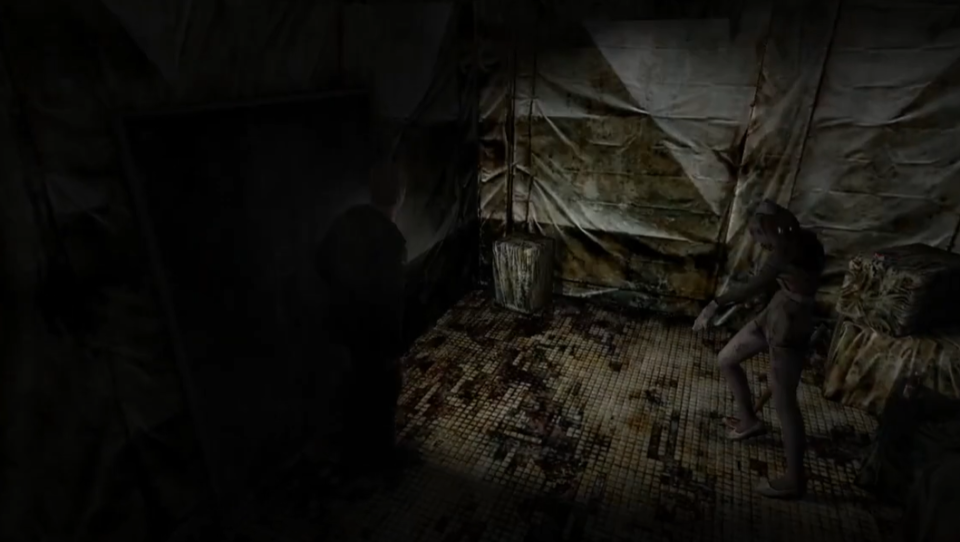
Flesh is front and center in this game. Every boss consists of a crossing between rusty iron and pulsating flesh. Even Eddie wields a rather large handgun during his boss fight. The way flesh is presented serves as a visual illustration of James’s longing for intimacy and his fear of reality.
A recurring motif throughout the game is James’s hold on reality linked to what he can physically touch. He is touching his face while looking in the mirror when we are first introduced to him, Maria touches his face in the Labyrinth to show him that she is real, Angela does the same when she meets him for the final time around the game’s climax, and Pyramid Head shoves James in the chest on the roof of Brookhaven Hospital seemingly as a means to prove to James that it is a real threat to him. Given the circumstances that have brought James to Silent Hill, it is no wonder that he would feel his hold on what is real and what is not slipping away slowly. Unfortunately for him, it is all very real.
James may be the main focus with regard to the game’s story, but the visuals adjust a bit every now and then to show what the other characters experience. The clearest example of this comes from Angela. I won’t get into her story too much, because it is about as complex as James’s story. What I mainly want to note is how James and Angela’s traumas both come from sex and violence.
It initially appears as if they are experiencing the world around them in the same way, but that is proven to be untrue when we meet Angela for the last time. She is standing in a burning stairwell that does not match the interior design of the location we are exploring. James comments on how hot the flames are, and Angela responds as if she is happy that someone else can see them. She says, “For me…it’s always like this.” She steps into the flames, and once we turn to leave, we are met with the exact same area, but it looks completely different. It is clearly the same layout. However, its design is much more akin to the dank, water-damaged hotel we were in prior to bumping into Angela’s hallway inferno.
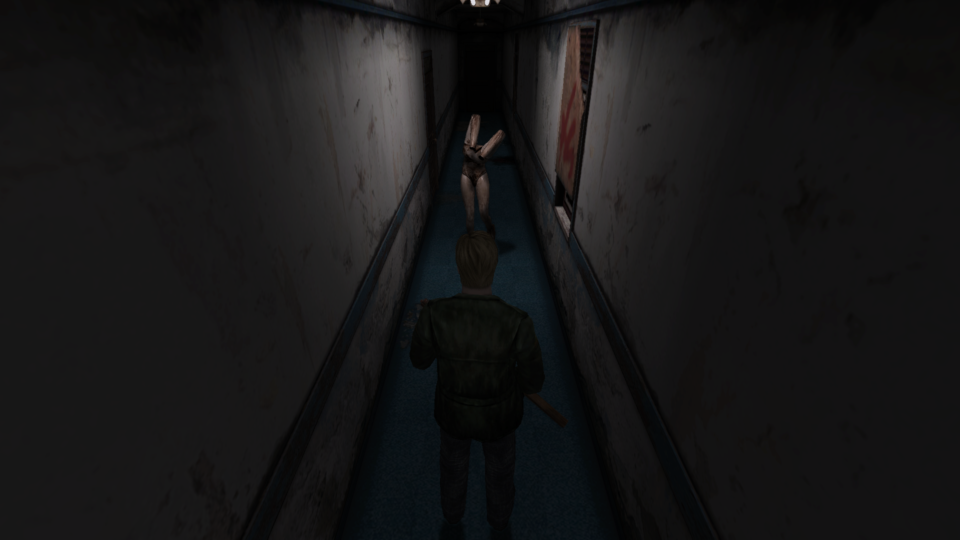
There is so much more to unpack regarding the visual language in Silent Hill 2. For instance, I did not even get started on the significance of hospital equipment and bedframes, which play a crucial role in James’s psychological deterioration. I encourage anyone looking for more thorough analyses of its visuals and story to check out the YouTube series by The Gaming Muse. You will have hours of material waiting for you there!
FROM FOG TO STATIC: Audio Storytelling in Silent Hill 2
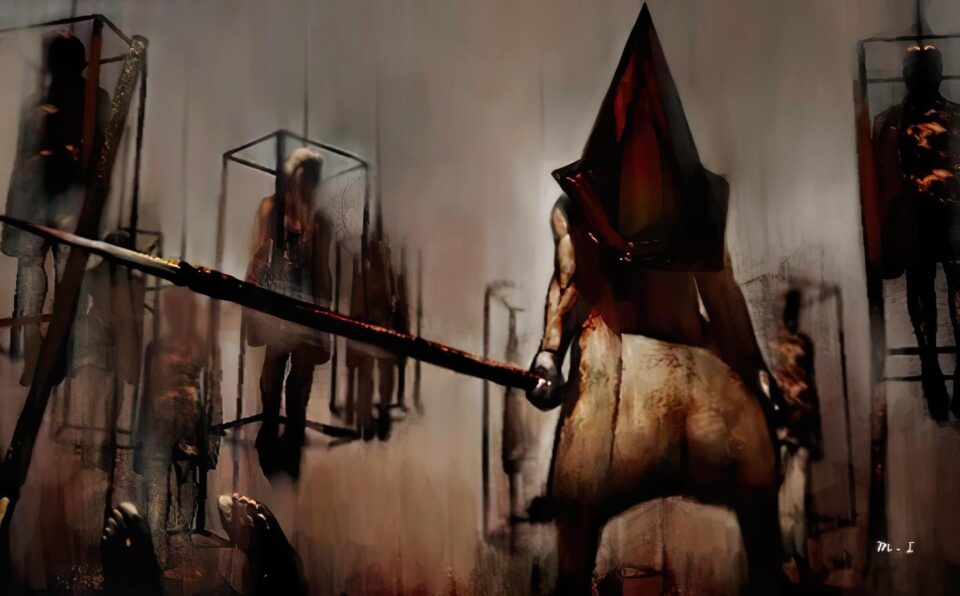
All of the audio elements established in the first game return in Silent Hill 2. Akira Yamaoka once again crafted the entire scope of the game’s sound design and music. The static of the radio returns to signal danger lurking in the shadows, and the drone of industrial ambiance still plagues you at certain moments. As such, I would like to focus more on a few sound choices specific to this game to illustrate how they contribute to its narrative.
It will always amaze me how Silent Hill has turned something as simple as the sound of scraping metal into the stuff of nightmares. In this case, I am specifically referring to the distinct screech of Pyramid Head’s “Great Knife.” It has such a unique cadence from all of the other ambient metal scratchings found in Silent Hill games. You can practically feel the creature’s presence. It is used expertly to haunt you as you traverse the town’s various locations. My favorite use of it is on the rooftop of Brookhaven Hospital. You hear the sound of the blade just before one of the best visual jump scares in the entire game.
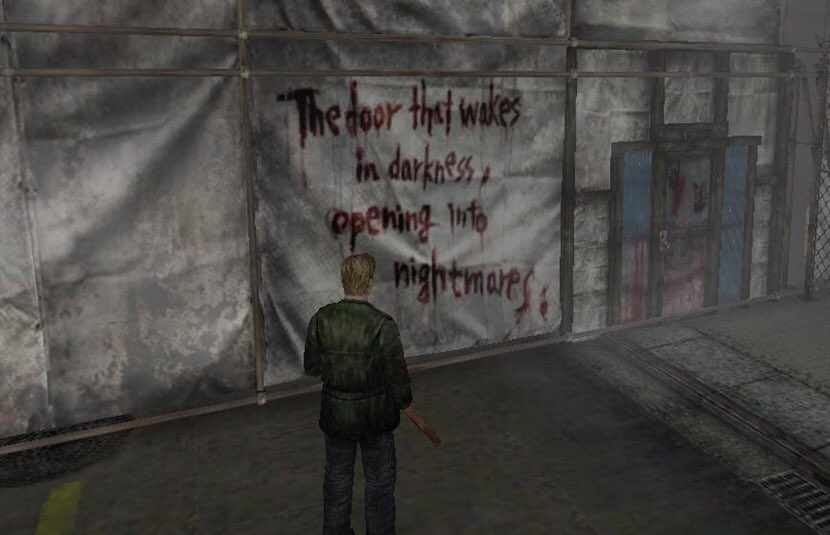
Although silence is used to great effect, I was surprised by how much music was present in my latest playthrough. Sometimes you enter a random room with nothing inside, but the most haunting music will play the entire time you’re there. It always succeeded in conveying James’s sense of dread at discovering what was behind every door. Perhaps his subconscious knew he could be confronted with the memory of his transgressions at any moment. Perhaps it was just meant to keep you from getting too comfortable. Either way, it is highly effective and kept me on my toes until the very end.
Yamaoka’s score in this entry is much more reserved and refined than the original. All of the soundtracks he has worked on are superb, with some of the later games having my favorite all-around soundtracks. Silent Hill 2 sets the tone for those future installments with its mix of intricate, pulsing nightmare soundscapes and mature lounge-rock compositions. “Promise (Reprise)” still fills my heart with melancholy unlike any other piece of music in gaming. What we are presented by this score is a connection with James’s internal dread, quiet, pain, and sensuality.
The score and sound cues combine with the visual design seamlessly to showcase how the fog obscuring James’s memories is protecting him from accepting accountability for his actions. As the game progresses, the score darkens and, ultimately, unleashes a distressing cacophony of unmitigated panic and rage.
THANK YOU FOR VISITING SILENT HILL
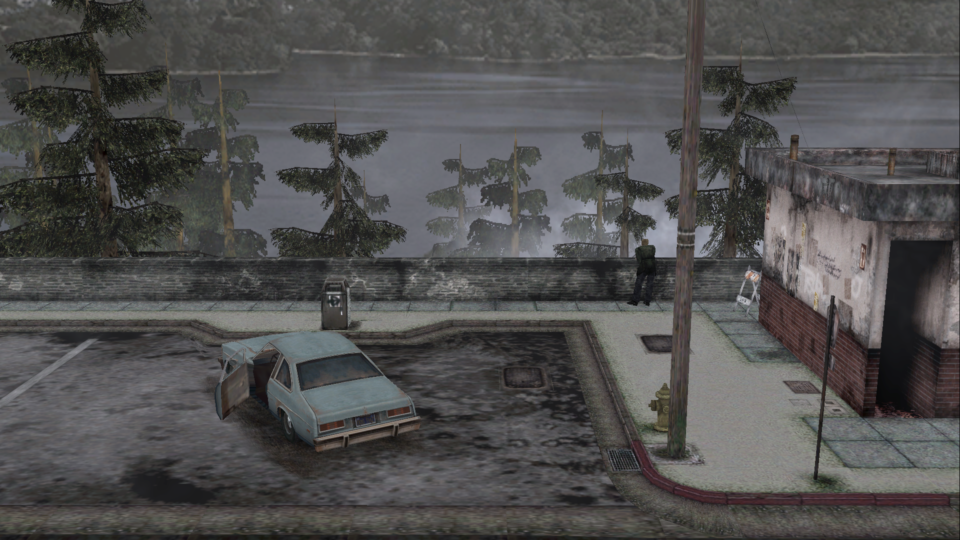
Silent Hill 2 is too rich of an aesthetic experience to fully unpack in a short-form article. The complexities of how each character affects the way the world is represented, and how they connect with each other thematically could have full book chapters dedicated to them. As mentioned earlier, Maria alone houses countless mysteries. Some of these seem to connect her directly to Alessa, whose presence is otherwise only felt in memory.
I will go into some of these things when I cover the aesthetics of the Silent Hill 2 Remake, should they still apply. If you would like to hear my thoughts concerning Alessa’s role in James’s story, be sure to let me know on Twitter @_Shockaholic!
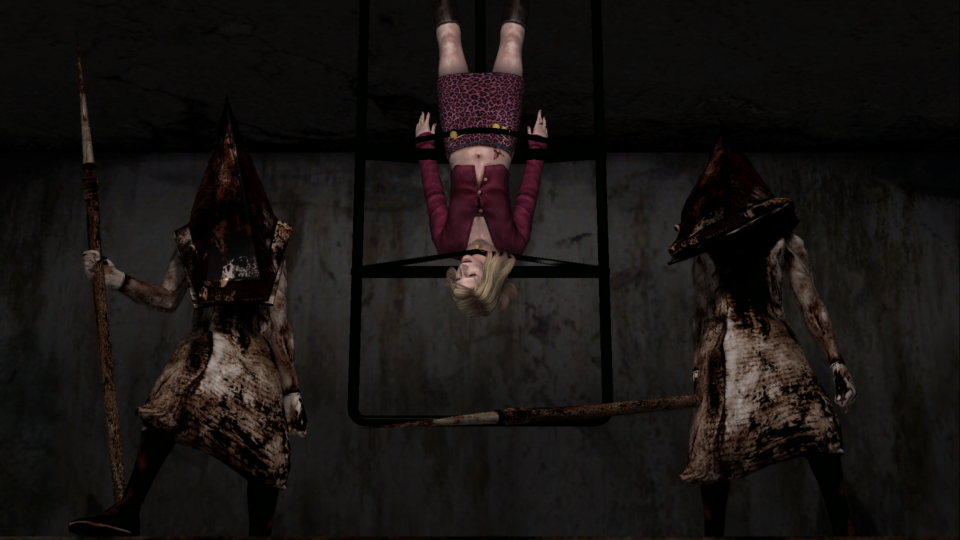
Like with the previous installment, I want to leave you with a quote from one of the developers. This quote from Takayoshi Sato, the game’s CGI Director, is taken from the “making of” documentary that comes with the European release of the game. He says, “Psychological horror has to shake humans’ hearts deeply. Shaking people’s hearts deeply means to uncover people’s core emotions and core motivations for life.”
I would like you to keep this in mind when you play a Silent Hill game. Ask yourself what the visuals and the sounds convey about the people within the game’s story. Who are they? What motivates them? And, most importantly, what can we learn about them via the game’s design?
Next up is Silent Hill 3.
I’ll meet you at the mall.
Make sure you don’t talk to any strangers on the way there….
Special thank you to Silent Hill Facts Hub for many of the screenshots featured in this and future installments.
Categorized:Editorials News

